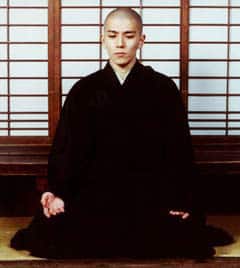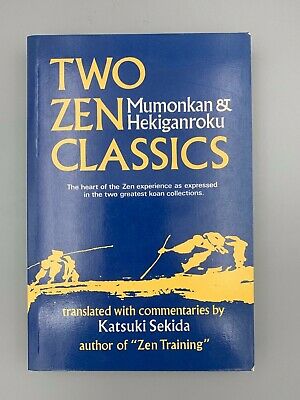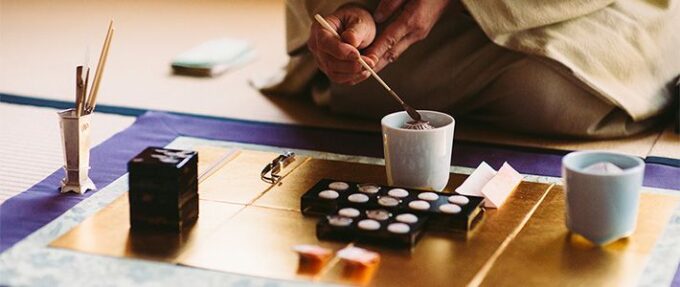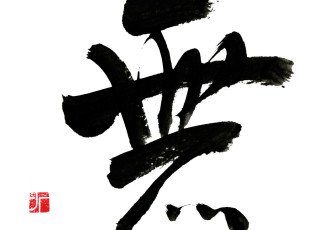Sitting is the way to clarify the ground of experiences and to rest at ease in your Actual Nature. This is called “the display of the Original Face” and “revealing the landscape of the basic ground”.
Drop through this bodymind and you will be far beyond such forms as sitting or lying down. Beyond considerations of good or bad, transcend any divisions between usual people and sages, pass beyond the boundary between sentient beings and Buddha.
Putting aside all concerns, shed all attachments. Do nothing at all. Don’t fabricate any things with the six senses.
Who is this? Its name is unknown; it cannot be called “body”, it cannot be called “mind”. Trying to think of it, the thought vanishes. Trying to speak of it, words die.
It is like a fool, an idiot. It is as high as a mountain, deep as the ocean. Without peak or depths, its brilliance is unthinkable, it shows itself silently. Between sky and earth, only this whole body is seen.
This one is without compare—he has completely died. Eyes clear, she stands nowhere. Where is there any dust? What can obstruct such a one?
Clear water has no back or front, space has no inside or outside. Completely clear, its own luminosity shines before form and emptiness were fabricated. Objects of mind and mind itself have no place to exist.
This has always already been so but it is still without a name. The great teacher, the Third Ancestor Sengcan temporarily called it “mind”, and the Venerable Nagarjuna once called it “body”. Enlightened essence and form, giving rise to the bodies of all the Buddhas, it has no “more” or “less” about it.
This is symbolized by the full moon but it is this mind which is enlightenment itself. The luminosity of this mind shines throughout the past and brightens as the present. Nagarjuna used this subtle symbol for the samadhi of all the Buddhas but this mind is signless, non-dual, and differences between forms are only apparent.
Just mind, just body. Difference and sameness miss the point. Body arises in mind and, when the body arises, they appear to be distinguished. When one wave arises, a thousand waves follow; the moment a single mental fabrication arises, numberless things appear. So the four elements and five aggregates mesh, four limbs and five senses appear and on and on until the thirty-six body parts and the twelve-fold chain of interdependant emergence. Once fabrication arises, it develops continuity but it still only exists through the piling up of myriad dharmas.
The mind is like the ocean waters, the body like the waves. There are no waves without water and no water without waves; water and waves are not separate, motion and stillness are not different. So it is said, “A person comes and goes, lives and dies, as the imperishable body of the four elements and five aggregates.”
Zazen is going right into the Ocean of Awareness, manifesting the body of all Buddhas. The natural luminosity of mind suddenly reveals itself and the original light is everywhere. There is no increase or decrease in the ocean and the waves never turn back.
2
Thus Buddhas have arisen in this world for the one Great Matter of teaching people the wisdom and insight of Awakening and to give them true entry. For this there is the peaceful, pure practice of sitting. This is the complete practice of self-enjoyment of all the Buddhas. This is the sovereign of all samadhis. Entering this samadhi, the ground of mind is clarified at once. You should know that this is the true gate to the Way of the Buddhas.
If you want to clarify the mind-ground, give up your jumble of limited knowledge and interpretation, cut off thoughts of usualness and holiness, abandon all delusive feelings. When the true mind of reality manifests, the clouds of delusion dissipate and the moon of the mind shines bright.
3
The Buddha said, “Listening and thinking about it are like being shut out by a door. Zazen is like coming home and sitting at ease.” This is true! Listening and thinking about it, views have not ceased and the mind is obstructed; this is why it’s like being shut out by a door. True sitting puts all things to rest and yet penetrates everywhere. This sitting is like coming home and sitting at ease.
Being afflicted by the five obstructions arises from basic ignorance and ignorance arises from not understanding your own nature. Zazen is understanding your own nature. Even if you were to eliminate the five obstructions, if you haven’t eliminated basic ignorance, you have not yet realized yourself as the Buddhas and Awakened Ancestors. If you want to release basic ignorance, the essential key is to sit and practice the Way.
An old master said, “When confusion ceases, clarity arises; when clarity arises, wisdom appears; and when wisdom appears, Reality displays itself.”
If you want to cease your confusion, you must cease involvement in thoughts of good or bad. Stop getting caught up in unnecessary affairs. A mind “unoccupied” together with a body “free of activity” is the essential point to remember.
When delusive attachments end, the mind of delusion dies out. When delusion dies out, the Reality that was always the case manifests and you are always clearly aware of it. It is not a matter of extinction or of activity.
4
Avoid getting caught up in arts and crafts, prescribing medicines and fortune-telling. Stay away from songs and dancing, arguing and babbling, fame and gain. Composing poetry can be an aid in clarifying the mind but don’t get caught up in it. The same is true for writing and calligraphy. This is the superior precedent for practitioners of the Way and is the best way to harmonize the mind.
Don’t wear luxurious clothing or dirty rags. Luxurious clothing gives rise to greed and then the fear that someone will steal something. This is a hindrance to practitioners of the Way. Even if someone offers them to you, to refuse is the excellent tradition from ancient times. If you happen to have luxurious clothing, don’t be concerned with it; if it’s stolen don’t bother to chase after it or regret its loss. Old dirty clothes should be washed and mended; clean them thoroughly before putting them on. If you don’t take care of them you could get cold and sick and hinder your practice. Although we shouldn’t be too anxious about bodily comforts, inadequate clothing, food and sleep are known as the “three insufficiencies” and will cause our practice to suffer.
Don’t eat anything alive, hard, or spoiled. Such impure foods will make your belly churn and cause heat and discomfort of bodymind, making your sitting difficult. Don’t indulge in rich foods. Not only is this bad for bodymind, it’s just greed. You should eat to promote life so don’t fuss about taste. Also, if you sit after eating too much you will feel ill. Whether the meal is large or small, wait a little while before sitting. Monks should be moderate in eating and hold their portions to two-thirds of what they can eat. All healthy foods, sesame, wild yams and so on, can be eaten. Essentially, you should harmonize bodymind.
5
When you are sitting in zazen, do not prop yourself up against a wall, meditation brace, or screen. Also, do not sit in windy places or high, exposed places as this can cause illness.
Sometimes when you are sitting you may feel hot or cold, discomfort or ease, stiff or loose, heavy or light, or sometimes startled. These sensations arise through disharmonies of mind and breath-energy. Harmonize your breath in this way: open your mouth slightly, allow long breaths to be long and short breaths to be short and it will harmonize naturally. Follow it for awhile until a sense of awareness arises and your breath will be natural. After this, continue to breathe through the nose.
The mind may feel as if it were sinking or floating, it may seem dull or sharp. Sometimes you can see outside the room, the insides of the body, the forms of Buddhas or Bodhisattvas. Sometimes you may believe that you have wisdom and now thoroughly understand all the sutras and commentaries. These extraordinary conditions are diseases that arise through disharmony of mind and breath. When this happens, sit placing the mind in the lap. When the mind sinks into dullness, raise attention above your hairline or before your eyes. When the mind scatters into distraction, place attention at the tip of the nose or at the tanden. After this rest attention in the left palm. Sit for a long time and do not struggle to calm the mind and it will naturally be free of distraction.
Although the ancient Teachings are a long-standing means to clarify the mind, do not read, write about, or listen to them obsessively because such excess only scatters the mind.
Generally, anything that wears out bodymind causes illness. Don’t sit where there are fires, floods, or bandits, by the ocean, near bars, brothels, where widows or virgins live, or near where courtesans sing and play music. Don’t live near kings, ministers, powerful or rich families, people with many desires, those who crave name and fame, or those who like to argue meaninglessly. Although large Buddhist ceremonials and the construction of large temples might be good things, one who is committed to practice should not get involved.
Don’t be fond of preaching the Dharma as this leads to distraction and scattering. Don’t be delighted by huge assemblies or run after disciples. Don’t try to study and practice many different things.
Do not sit where it is too bright or too dark, too cold or too hot. Do not sit where pleasure-seekers or whores live. Go and stay in a monastery where there is a true teacher. Go deep into the mountains and valleys. Practice kinhin by clear waters and verdant mountains. Clear the mind by a stream or under a tree. Observe impermanence without fail and you will keep the mind that enters the Way.
The mat should be well-padded so that you can sit comfortably. The practice place should always be kept clean. Burn incense and offer flowers to the Dharma Protectors, the Buddhas and Bodhisattvas and your practice will be protected. Put a statue of a Buddha, Bodhisattva or arhat on the altar and demons of distraction will not overwhelm you.
Remain always in Great Compassion and dedicate the limitless power of zazen to all living beings.
Do not become arrogant, conceited, or proud of your understanding of the Teachings; that is the way of those outside of the Way and of usual people. Maintain the vow to end afflictions, the vow to realise Awakening and just sit. Do nothing at all. This is the way to study Zen.
Wash your eyes and feet, keep bodymind at ease and deportment in harmony. Shed worldly sentiments and do not become attached to sublime feelings about the Way. Though you should not begrudge the Teachings, do not speak of it unless you are asked. If someone asks, keep silent three times; if still they ask from their heart, then give the Teachings. If you wish to speak ten times, keep quiet nine; it’s as if moss grew over your mouth or like a fan in winter. A wind-bell hanging in the air, indifferent to the direction of the wind—this is how people of the Way are.
Do not use the Dharma for your own profit. Do not use the Way to try to make yourself important. This is the most important point to remember.
6
Zazen is not based upon teaching, practice or realization; instead these three aspects are all contained within it. Measuring realization is based upon some notion of enlightenment—this is not the essence of zazen. Practice is based upon strenuous application—this is not the essence of zazen. Teaching is based upon freeing from evil and cultivating good—this is not the essence of zazen.
Teaching is found in Zen but it is not the usual teaching. Rather, it is a direct pointing, just expressing the Way, speaking with the whole body. Such words are without sentences or clauses. Where views end and concept is exhausted, the one word pervades the ten directions without setting up so much as a single hair. This is the true Teaching of the Buddhas and Awakened Ancestors.
Although we speak of “practice”, it is not a practice that you can do. That is to say, the body does nothing, the mouth does not recite, the mind doesn’t think things over, the six senses are left to their own clarity and unaffected. So this is not the sixteen stage practice of the hearers [the path of insight or darsanamarga into the four noble truths at four different levels]. Nor is it the practice of understanding the twelve nidanas of inter-dependent emergence of those whose practice is founded upon isolation. Nor is it the six perfections within numberless activities of the Bodhisattvas. It is without struggle at all so is called Awakening or enlightenment. Just rest in the Self-enjoyment Samadhi of all the Buddhas, wandering playfully in the four practices of peace and bliss of those open to Openness. This is the profound and inconceivable practice of Buddhas and Awakened Ancestors.
Although we speak of realization, this realization does not hold to itself as being “realization”. This is practice of the supreme samadhi which is the knowing of unborn, unobstructed, and spontaneously arising Awareness. It is the door of luminosity which opens out onto the realization of Those Who Come Thus, born through the practice of the great ease. This goes beyond the patterns of holy and profane, goes beyond confusion and wisdom. This is the realization of unsurpassed enlightenment as our own nature.
Zazen is also not based upon discipline, practice, or wisdom. These three are all contained within it.
Discipline is usually understood as ceasing wrong action and eliminating evil. In zazen the whole thing is known to be non-dual. Cast off the numberless concerns and rest free from entangling yourself in the “Buddhist Way” or the “worldly way.” Leave behind feelings about the path as well as your usual sentiments. When you leave behind all opposites, what can obstruct you? This is the formless discipline of the ground of mind.
Practice usually means unbroken concentration. Zazen is dropping the bodymind, leaving behind confusion and understanding. Unshakeable, without activity, it is not deluded but still like an idiot, a fool. Like a mountain, like the ocean. Without any trace of motion or stillness. This practice is no-practice because it has no object to practice and so is called great practice.
Wisdom is usually understood to be clear discernment. In zazen, all knowledge vanishes of itself. Mind and discrimination are forgotten forever. The wisdom-eye of this body has no discrimination but is clear seeing of the essence of Awakening. From the beginning it is free of confusion, cuts off concept, and open and clear luminosity pervades everywhere. This wisdom is no-wisdom; because it is traceless wisdom, it is called great wisdom.
The Teaching that the Buddhas have presented all throughout their lifetimes are just this discipline, practice, and wisdom. In zazen there is no discipline that is not maintained, no practice that is uncultivated, no wisdom that is unrealized. Conquering the demons of confusion, attaining the Way, turning the wheel of the Dharma and returning to tracelessness all arise from the power of this. Siddhis and inconceivable activities, emanating luminosity and proclaiming the Teachings—all of these are present in this zazen. Penetrating Zen is zazen.
7
To practice sitting, find a quiet place and lay down a thick mat. Don’t let wind, smoke, rain or dew come in. Keep a clear space with enough room for your knees. Although in ancient times there were those who sat on diamond seats or on large stones for their cushions. The place where you sit should not be too bright in the daytime or too dark at night; it should be warm in winter and cool in summer. That’s the key.
Drop mind, intellect and consciousness, leave memory, thinking, and observing alone. Don’t try to fabricate Buddha. Don’t be concerned with how well or how poorly you think you are doing; just understand that time is as precious as if you were putting out a fire in your hair.
The Buddha sat straight, Bodhidharma faced the wall; both were whole-hearted and committed. Shishuang was like a gnarled dead tree. Rujing warned against sleepy sitting and said, “Just-sitting is all you need. You don’t need to make burning incense offerings, meditate upon the names of Buddhas, repent, study the scriptures or do recitation rituals.”
When you sit, wear the kesa (except in the first and last parts of the night when the daily schedule is not in effect). Don’t be careless. The cushion should be about twelve inches thick and thirty-six in circumference. Don’t put it under the thighs but only from mid-thigh to the base of the spine. This is how the Buddhas and Ancestors have sat. You can sit in the full or half lotus postures. To sit in the full lotus, put the right foot on the left thigh and the left foot on the right thigh. Loosen your robes but keep them in order. Put your right hand on your left heel and your left hand on top of your right, thumbs together and close to the body at the level of the navel. Sit straight without leaning to left or right, front or back. Ears and shoulders, nose and navel should be aligned. Place the tongue on the palate and breathe through the nose. The mouth should be closed. The eyes should be open but not too wide nor too slight. Harmonizing the body in this way, breathe deeply with the mouth once or twice. Sitting steadily, sway the torso seven or eight times in decreasing movements. Sit straight and alert.
Now think of what is without thought. How can you think of it? Be Before Thinking. This is the essence of zazen. Shatter obstacles and become intimate with Awakening Awareness.
When you want to get up from stillness, put your hands on your knees, sway seven or eight times in increasing movements. Breathe out through the mouth, put your hands to the floor and get up lightly from the seat. Slowly walk, circling to right or left.
If dullness or sleepiness overcome your sitting, move to the body and open the eyes wider, or place attention above the hairline or between your eyebrows. If you are still not fresh, rub the eyes or the body. If that still doesn’t wake you, stand up and walk, always clockwise. Once you’ve gone about a hundred steps you probably won’t be sleepy any longer. The way to walk is to take a half step with each breath. Walk without walking, silent and unmoving.
If you still don’t feel fresh after doing kinhin, wash your eyes and forehead with cold water. Or chant the Three Pure Precepts of the Bodhisattvas. Do something; don’t just fall asleep. You should be aware of the Great Matter of birth and death and the swiftness of impermanence. What are you doing sleeping when your eye of the Way is still clouded? If dullness and sinking arise repeatedly you should chant, “Habituality is deeply rooted and so I am wrapped in dullness. When will dullness disperse? May the compassion of the Buddhas and Ancestors lift this darkness and misery.”
If the mind wanders, place attention at the tip of the nose and tanden and count the inhalations and exhalations. If that doesn’t stop the scattering, bring up a phrase and keep it in awareness – for example: “What is it that comes thus?” or “When no thought arises, where is affliction? – Mount Meru!” or “What is the meaning of Bodhidharma’s coming from the West? – The cypress in the garden.” Sayings like this that you can’t draw any flavour out of are suitable.
If scattering continues, sit and look to that point where the breath ends and the eyes close forever and where the child is not yet conceived, where not a single concept can be produced. When a sense of the two-fold emptiness of self and things appears, scattering will surely rest.
8
Arising from stillness, carry out activities without hesitation. This moment is the koan. When practice and realization are without complexity then the koan is this present moment. That which is before any trace arises, the scenery on the other side of time’s destruction, the activity of all Buddhas and Awakened Ancestors, is just this one thing.
You should just rest and cease. Be cooled, pass numberless years as this moment. Be cold ashes, a withered tree, an incense burner in an abandoned temple, a piece of unstained silk.
This is my earnest wish.
*translated by Ven. Anzan Hoshin roshi and Yasuda Joshu Dainen roshi
[excerpted from the Treasury of Luminosity, also published in “The Art of Just Sitting: Essential Writings on the Zen Practice of Shikantaza” second edition, edited by John Daido Loori roshi, Wisdom Publications, 2004]




